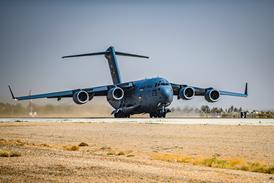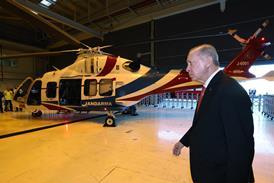An incoming change of leadership at JetBlue Airways will dovetail with new revenue opportunities at the carrier in 2015, although analysts say the airline still needs to do more to fix its lagging margins.
JetBlue president Robin Hayes will step into the chief executive position on 15 February 2015, succeeding Dave Barger whose contract expires after almost eight years at the helm of the airline. Hayes' appointment had been speculated about for months, and comes at a time when airline analysts have repeatedly expressed frustration with JetBlue's business model and lower returns compared to its US airline peers.
Before JetBlue's announcement of the leadership change, Barger had maintained steadfastly that there was nothing wrong with JetBlue's model. JetBlue sees itself as the provider of a "hybrid" product to a market segment that is underserved by the legacy carriers and the industry's super discounters - that was Barger's common refrain in the recent year.
Industry analysts do not quite agree.
"JBLU is selling New York strip to customers simply looking for a hamburger," says Barclays analyst David Fintzen in a research report today. Fintzen argues that JetBlue's problem is its revenue, and not costs. "JBLU faces an earnings problem that can be diagnosed as either the network or the onboard product, but it's arguably the combination of the two (or more realistically, the mis-match of the two)," he adds.
Fintzen estimates that the airline lags the average US airline in returns by about $400 million in annual earnings. The carrier does not have "large chunks of underperforming routes" that are behind the low returns, he points out. "Rather, low returns reflect chronic problems with the overall model."
The carrier recently debuted a premium cabin product, dubbed "Mint", on some transcontinental routes in a bid to capture a slice of the business market on those routes. But analysts have been less than impressed. Last month, Bank of America Merrill Lynch downgraded the airline to underperform from neutral, citing Mint as a factor among concerns of slowing revenue.
"We wish JetBlue had introduced a less top-of-the-line product that could stimulate demand and deliver strong ROIC [return on invested capital] at around $1,500 roundtrip; we believe the current product requires a $2,000 roundtrip to generate returns," said the bank's analyst Glenn Engel.
Fintzen calls for the airline to focus more on price, pointing out that most of its customers travel for leisure and are thus more fare-sensitive. "The current strategy of providing a product that people 'like', but clearly aren't willing to pay for, strikes us as akin to selling [or giving away) the Delta product to Spirit customers," he says.
In recent months - despite Barger's statements of the airline adhering to its business model - the carrier has shown signs that it is listening to Wall Street. It has said it will unveil a new fare family structure in 2015, which will likely unbundle the airline's fares further. JetBlue now only offers two fare selections to passengers booking fares. Barger has said the carrier will also start charging for the first checked bag in 2015, a move that will likely be linked to the new fare structure.
Analysts like Fintzen believe the airline can do more, and has called for the carrier to consider adding more seats to its aircraft, which Fintzen believes is "the bigger opportunity". He estimates that adding three rows of seats on JetBlue's Airbus A320 family aircraft could add about $370 million in annual operating profit.
"JBLU is [a] predominantly leisure focused airline by network... but provides a product is configured more like a business carrier," says Fintzen. Southwest Airlines, Frontier Airlines and Spirit Airlines all have higher seat counts on their narrowbody aircraft, he points out.
Fintzen, however, acknowledges that the airline might not necessarily take such steps to up the seat density on its aircraft. "We suspect our views on density will provide a larger step than the company is willing to take," he says.
Hayes, speaking on the airline's second quarter earnings call in July, said the airline is more focused on rolling out its fare family structure instead of adding more seats. The carrier is not "philosophically against" adding more seats, he said. "But we actually believe that things like fare families is a much bigger source of immediate value generation, so that is where we are focused right now," Hayes said.
While Hayes is expected to address some of the revenue issues that investors have raised, it is not clear how far he will go to change JetBlue's business model - and analysts are not expecting an overhaul.
"We think some evolution in JBLU's model is likely, but don't expect enough change to drive JBLU returns to competitive levels," says Fintzen.
Wolfe Research analyst Hunter Keay said in a September research report that "culture change is hard", noting that the airline's employees will likely be asked to do things "out of their comfort zones" when Hayes takes charge. Even though Keay believes the leadership change is positive for the airline in the longer term, he said: "Investors should temper their expectations of how quickly this ship can be turned."
Source: Cirium Dashboard























